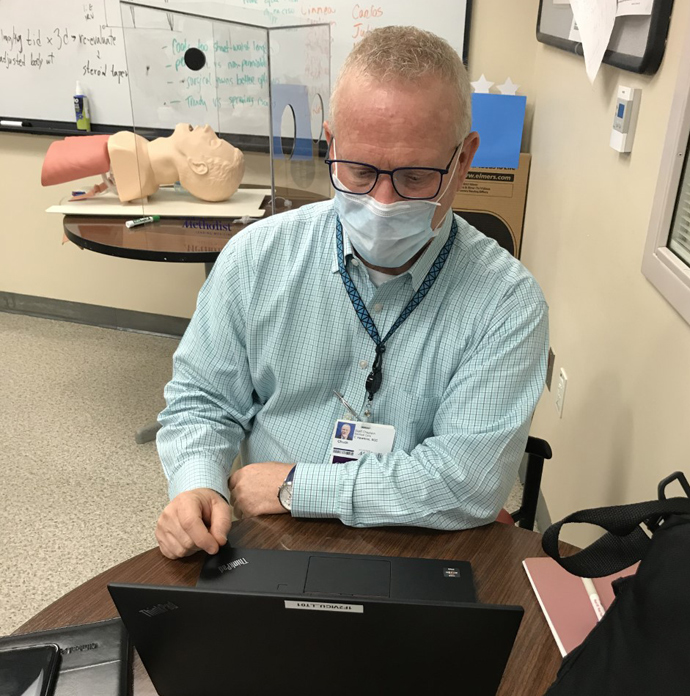
To apply for a HCOP, you must meet eligibility criteria. Eligibility includes economic disadvantage, educational hardship, and a 2.5 GPA. The program is focused on three important milestones in education: college preparation, stress management, as well as health disparities. This article outlines the steps you need to take to apply for HCOP. HCOP offers many benefits. This program provides the support and resources that you need to succeed.
HCOP stands for High-Performance Pipeline Program
The Health Careers Opportunity Program (HCOP) is a federally funded grant program that enables underrepresented students to enter and graduate from health professions school. By participating in this program, students with low academic abilities can improve their skills as well as overcome academic barriers that could prevent them from entering the field. By facilitating educational pathways to health careers, HCOP aims to improve college graduation rates and reduce educational and financial barriers for underrepresented students. This program is also designed to support first-generation college students.
It has been a model program for healthcare training of low-income adults. HCOP helps to place more than 100 new jobs every year. The Association of American Medical Colleges (AAMC), U.S. Department of Health and Human Services and Administration for Children and Families support the HCOP program. It encourages participants in setting long-term career goals and pursuing education that leads to a rewarding profession. As part of their admission to Hostos LPN certificate, LRN degree and allied healthcare career associate degree programs, graduates will receive academic counseling and career counselling.
It focuses only on three major milestones in education
HCOP is a pathway for students from underrepresented backgrounds to a career working in the healthcare professions. The HCOP involves three key educational milestones, high school graduation, college acceptance, and retention into a college health professions program. The Comprehensive Approach Funding Preference for the Comprehensive Approach has statutory power. It emphasizes the partnership between public-private entities to create a strong applicant pool.

During the first year of the program, students who earn a GPA below 2.5 will enter a probationary period during which they must improve their GPA to a minimum of a 2.5. The program also contains a research component. This is to assess the program's effectiveness. Students will be asked to participate in research studies as HCOP Ambassadors. Participation in research studies as HCOP Ambassadors is voluntary. Students may withdraw at any point.
It helps college-bound students prepare.
Participants in the Health Careers Opportunity Program can prepare for college with an associate of arts (AAA) in liberal arts curriculum that focuses on mathematics and foundation sciences. Additional science courses prepare students to pursue health-care professions. Program coordinators serve as academic advisers. The program provides three hours of academic support per week during study sessions. To assist students with improving their SAT scores and academic performance, academic support will be provided.
There are two virtual summer experiences offered by the program, Health Science Summer Camp, and Health Science Summer Bridge Program. Both help participants prepare for college. The Bridge Program is a health-care-oriented program that builds upon the foundation laid by the Bridge Program. The Health Careers Opportunity Program recruits non-credit instructors to assist students in the learning process, navigate obstacles, and give real-world experience that allows them to apply the classroom content.
It increases retention
HCOP, or Health Careers Opportunity Program is a grant program that provides financial assistance to qualified schools for health professions or non-profit groups that provide training and education to individuals with low income who want to enter the field of health care. The program funds projects that increase opportunities for those who are less fortunate in the healthcare professions. Its goal is to increase retention and matriculation rates for students pursuing health professions.

HCOP is a $15 Million national pipeline program that helps students with disadvantaged backgrounds get into health care. The program helps students attain the three milestones, high school, college and professional. HCOP students are more likely that they will graduate and find employment in health care than those from other demographics. HCOP also increases the retention rate of students in health-related professions such as pharmacy, physician assistants, nursing, and physician assistants.
FAQ
How can I get enough vitamins
Your diet can provide most of your daily requirements. Supplements are an option if you are low in any vitamin. You can purchase a multivitamin that includes all of the vitamins you need. Or you can buy individual vitamins from your local drugstore.
If you are concerned about getting enough nutrients, talk to your doctor about what foods contain the best sources of vitamins. Dark green leafy vegetables like spinach, broccoli and kale, as well as turnip greens and mustard greens such as turnip and mustard greens and bok choy, are rich in vitamins K & E.
Ask your doctor if you're not sure how many vitamins you should take. Based on your medical history and your current health, your doctor can recommend the correct dosage.
How do I count calories?
You might wonder, "What's the best diet for me?" or "is counting calories necessary?" Well, the answer depends on several factors including your current health status, your personal goals, your preferences, and your overall lifestyle.
The Best Diet for Me - Which One is Right For You?
The best diet for me depends on my current health status, my personal goals, my preferences, and my overall lifestyle. There are many good and bad diets. Some diets work for some people, while others are not. What should I do? What can I do to make the right decision?
These are the questions this article will answer. It begins by briefly describing the various diets available today. The pros and cons of each diet are then discussed. Then, we will discuss which diet is the best.
To begin, let's take a quick look at the different types of diets.
Diet Types
There are three types of diets available: ketogenic, high-protein, and low fat. Let's take a look at them all below.
Low Fat Diets
A low fat diet is a diet that restricts the amount of fats consumed. This is achieved through reducing intakes of saturated fats (butter and cream cheese, for example). It is possible to replace these saturated fats with unsaturated ones (olive oil or avocados). A low fat diet is often recommended for those who want to lose weight quickly and easily. This diet can cause problems such constipation as heartburn, indigestion, and even stomach pain. It can also lead to vitamin deficiencies, if someone doesn't get enough vitamins in their food.
High Protein Diets
High protein diets restrict carbohydrates in favor of proteins. These diets have higher protein levels than other diets. These diets are intended to increase muscle mass and reduce calories. Unfortunately, they can't provide adequate nutrition for those who eat regularly. Also, they tend to be very restrictive, so they aren't suitable for everyone.
Ketogenic Diets
Ketogenic diets can also be known as keto diets. They are high in fat, moderately high in protein and low in carbohydrates. These are often used by bodybuilders and athletes because they allow them the ability to train harder and for longer periods of time without feeling tired. You must adhere to all side effects, including fatigue, headaches, nausea and headaches.
What is the difference between a calorie or a kilocalorie.
Calories are units that measure how much food has energy. Calories are the unit of measurement. One calorie contains the energy needed to raise the temperature of one gram of water by one degree Celsius.
Kilocalories can also be used to refer to calories. Kilocalories are expressed in thousandths (or a calorie). For example, 1000 calories equals one kilocalorie.
What is the difference of fat and sugar?
Fat is an energy source that comes directly from food. Sugar is a sweet, naturally occurring substance in fruits and vegetables. Both fats and sugars provide the same number of calories. But, fats have more calories than sugars.
Fats are stored in your body and can cause obesity. They cause cholesterol buildup which can lead to strokes and heart attacks.
Sugars provide instant energy and are rapidly absorbed by the body. This causes blood glucose levels to rise. High blood glucose levels can be dangerous because it increases the risk of developing type II diabetes.
What causes weight loss as we age?
How do you determine if your bodyweight is changing?
Weight loss happens when there is less muscle mass and more fat. This means that daily energy needs must be greater than the calories consumed. Activity levels are the most common reason for weight loss. You can also lose weight due to stress, illness, pregnancy, hormonal imbalances and certain medications. Weight gain occurs when there is more fat than muscle mass. It occurs when people consume more calories each day than they use. There are many reasons for this, including overeating and increased physical activity.
Our bodies lose weight because we eat fewer calories than we burn. By exercising regularly, our metabolism rates increase which in turn burns more calories during the day. This doesn't necessarily mean we will lose weight. What matters is whether we are losing fat or building muscle. We will lose weight if we burn more calories than we consume. If we consume more calories that we burn, we are actually storing them in fat.
As we age we tend to be slower in moving and thus we don't move nearly as much. We also tend have less food to eat than when our children were young. As a result, we gain weight. However, our muscle mass is more important than we realize and makes us appear larger.
There's no way to tell how much weight you've lost unless you weigh yourself every week. There are many ways you can measure your weight. You can check your waist size, your hips, your thighs, your arms, etc. Some prefer to use the bathroom scales, others prefer to use tape measures.
Track your progress by measuring your waistline and weighing yourself every week. You can also take pictures of yourself every few months to see how far you've come.
Online measurements of your height and weight can help you determine your body mass. If you are 5'10" tall, and you weigh 180 lbs, then you would probably weigh 180 lbs.
What does it take to make an antibiotic work?
Antibiotics can be used to kill bacteria. The treatment of bacterial infections is done with antibiotics. There are many kinds of antibiotics. Some are given orally, while some are injected. Other antibiotics are applied topically.
People who have been infected with certain germs may need antibiotics. If someone has chicken pox, they might need to take an oral antibiotic in order to prevent shingles. For those with strep-thorphritis, an injection of penicillin could be administered to prevent them from getting pneumonia.
Children should not be given antibiotics without the consent of a doctor. Children are more susceptible to side effects from antibiotics than adults.
Diarrhea is one of the most common side effects of antibiotics. Other side effects possible include dizziness, nausea, vomiting, stomach cramps, dizziness and allergic reactions. These side effects are usually gone once the treatment is complete.
Statistics
- The Dietary Guidelines for Americans recommend keeping added sugar intake below 10% of your daily calorie intake, while the World Health Organization recommends slashing added sugars to 5% or less of your daily calories for optimal health (59Trusted (healthline.com)
- In both adults and children, the intake of free sugars should be reduced to less than 10% of total energy intake. (who.int)
- WHO recommends consuming less than 5% of total energy intake for additional health benefits. (who.int)
- This article received 11 testimonials and 86% of readers who voted found it helpful, earning it our reader-approved status. (wikihow.com)
External Links
How To
What does "vitamin" actually mean?
Vitamins are organic compounds naturally found in food. Vitamins are essential for our bodies to absorb nutrients from the foods we eat. The body cannot make vitamins; therefore, they must be obtained from food.
Two types of vitamins exist: water-soluble vitamin and fat-soluble vitamin. Water-soluble vitamins dissolve in water easily. These include vitamin C (thiamine), Vitamin B1 (riboflavin), Vitamin B2 (riboflavin), Vitamin B3 (niacin), Vitamin B6 (pyridoxine), Vitamin C, B1 (thiamine), Vitamin B2 (riboflavin), Vitamin B3 (niacin), and Vitamin B6 (pyridoxine). Fat-soluble vitamins are stored in the liver, fatty tissue and kidneys. Examples include vitamin D, E, K, A, and beta carotene.
Vitamins are classified based on their biological activity. There are eight major types of vitamins:
-
A – Essential for normal growth, and the maintenance of good health.
-
C is important for nerve function and energy production.
-
D - necessary for healthy bones and teeth.
-
E is needed for good reproduction and vision.
-
K - Required for healthy nerves and muscles.
-
P - vital for building strong bones andteeth.
-
Q - Aids in digestion and absorption.
-
R is required for the production of red blood cells.
The recommended daily intake (RDA), of vitamins varies with age, gender and physical condition. The U.S. Food and Drug Administration sets RDA values.
For adults aged 19 and older, the RDA for vitamin B is 400 micrograms daily. Pregnant mothers need 600 micrograms per days because it is vital for the development and growth of their baby. Children ages 1-8 require 900 micrograms per day. Infants below one year old require 700mg per day. But, between 9 months to 12 months, the amount drops to 500mg per day.
Children aged 1-18 years need 800 micrograms daily, while children overweight require 1000 micrograms per days. Children who are severely obese or underweight will need 1200 micrograms each day.
Children 4-8 years old who have anemia must consume 2200 micrograms of Vitamin C daily.
2000 micrograms are required daily for good health in adults over 50. Mothers who are pregnant, nursing, or have a high nutrient need will require 3000 micrograms a day.
1500 micrograms is the recommended daily intake for adults aged 70+, who lose approximately 10% of muscle each year.
Women who have been pregnant or are lactating require more than the RDA. Pregnant women need 4000 micrograms per dayduring pregnancy and 2500 micrograms per day after delivery. Breastfeeding mothers need 5000 mg per day when breastmilk is being produced.